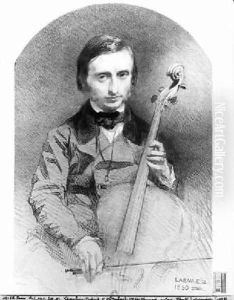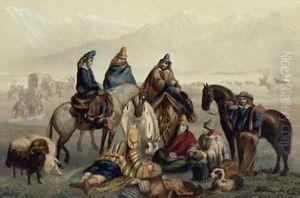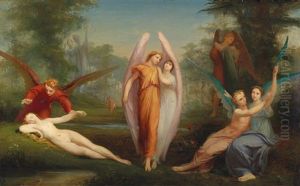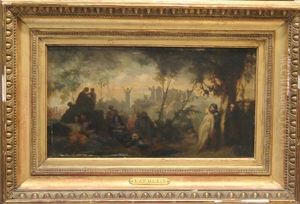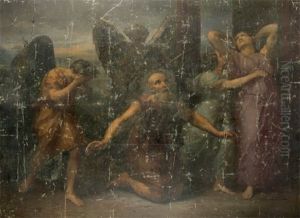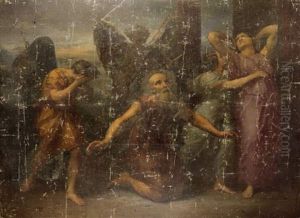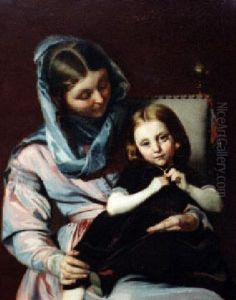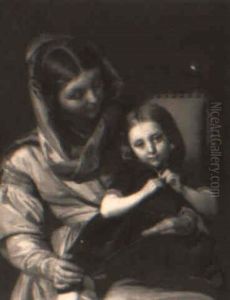Alexandre Laemlein Paintings
Alexandre Laemlein, whose full name was Alexandre-Louis Léon Laemlein, was a 19th-century French painter and art educator born on August 22, 1813, in Mulhouse, then part of the French Empire. He was known for his historical and biblical paintings, which were in line with the academic art standards of his time. Laemlein's work was characterized by its detailed execution, adherence to classical composition, and often moralizing or didactic themes, which were common among artists of the period who followed the academic tradition.
In 1831, Laemlein moved to Paris to pursue his art education, where he studied under prominent artists such as Jean-Auguste-Dominique Ingres and Paul Delaroche. These masters were known for their neoclassical and historical painting styles, which undoubtedly influenced Laemlein's development as an artist. His academic training provided him with a solid foundation in drawing and composition, skills that were highly valued in the academic circles of the time.
Laemlein exhibited his works at the Paris Salon, the official art exhibition of the Académie des Beaux-Arts in Paris, from the 1830s onwards. His paintings often reflected his Jewish heritage, and he was one of the few artists of his time to address Jewish themes in his work. Notably, his painting 'The Sorrow of the Jews' (La douleur des Juifs) was exhibited at the Salon of 1844, and it received considerable attention for its portrayal of Jewish suffering.
Despite his success as a painter, Laemlein also dedicated himself to education. He became a professor of drawing and was committed to the training of young artists. In his later years, Laemlein's health began to decline, and he faced financial difficulties. He continued to paint but could not achieve the same level of recognition he once enjoyed in the earlier part of his career.
Alexandre Laemlein passed away on May 6, 1871, in Neuilly-sur-Seine, near Paris. Although not as widely known today as some of his contemporaries, Laemlein's contributions to 19th-century French art, especially his unique focus on Jewish subjects within the context of academic art, make him a figure of interest in the study of European art history.
